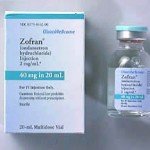Deadly Heart Risk Is Side Effect Zofran
Zofran, the anti nausea medication used for chemotherapy patients, may affect the electrical activity of the heart, which is known as QT interval prolongation.
A recently completed clinical study shows that a 32mg single intravenous dose of ondansetron (Zofran) could cause patients to develop an abnormal heart rhythm called Torsades de Pointes. Torsade de Pointes is a very serious heart arrhythmia that can potentially be fatal. The arrhythmia occurs when the two lower chambers of the heart known as the ventricles, begin to beat very quickly. As a result, blood cannot be pumped out of the heart and into the rest of the body efficiently. The condition can be due to genetics or certain types of medication.
The manufacture of Zofran, GlaxoSmithKline, has announced the drug label will be changed in order to remove the 32mg single intravenous dose. The updated label will lower the dosage to 0.15mg every 4 hours for three doses and state that no single intravenous dose should exceed 16mg.
The FDA website posted the following recommendations:
The new information on QT prolongation does not change any of the recommended oral dosing regimens for ondansetron. It also does not change the recommended lower dose intravenous dosing of ondansetron to prevent post-operative nausea and vomiting.
- The use of a single 32 mg intravenous dose of ondansetron should be avoided. New information indicates that QT prolongation occurs in a dose-dependent manner, and specifically at a single intravenous dose of 32 mg.
- Patients who may be at particular risk for QT prolongation with ondansentron are those with congenital long QT syndrome, congestive heart failure, bradyarrhythmias, or patients taking concomitant medications that prolong the QT interval
- Electrolyte abnormalities (e.g., hypokalemia or hypomagnesemia) should be corrected prior to the infusion of ondansetron.
- The lower dose intravenous regimen of 0.15 mg/kg every 4 hours for three doses may be used in adults with chemotherapy-induced nausea and vomiting. However, no single intravenous dose of ondansetron should exceed 16 mg due to the risk of QT prolongation.
- The new information does not change any of the recommended oral dosing regimens for ondansetron, including the single oral dose of 24 mg for chemotherapy induced nausea and vomiting.




